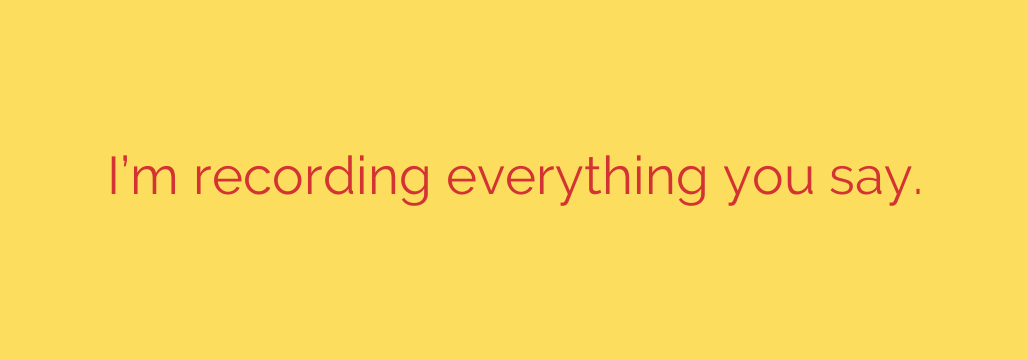
Are Your Devices Listening? A Guide to Digital Eavesdropping and How to Stop It
Have you ever discussed a product with a friend, only to see an advertisement for it on your social media feed moments later? It’s an unsettling experience that leaves many wondering, “Is my phone actually listening to me?” The short answer is yes, but the reality is more complex than a simple conspiracy theory.
Your smart devices—from your phone and smart speaker to your TV—are designed with microphones that are, in a sense, always on. Understanding how this technology works is the first step toward reclaiming your digital privacy.
The “Wake Word” and Constant Listening
Smart assistants like Siri, Alexa, and Google Assistant function by constantly listening for a specific “wake word.” Your device’s microphone is actively processing ambient audio in a local, low-power mode, waiting for you to say “Hey Siri” or “Okay Google.”
According to tech companies, the device only begins to record and transmit audio to the cloud after it detects that wake word. However, these systems can be triggered by accident, mistaking a similar-sounding word or phrase for a command. This means fragments of your private conversations can be unintentionally recorded and sent to a server.
Why Your Voice Recordings Are Stored
When you speak to a digital assistant, your command isn’t processed on the device itself. It’s sent to powerful cloud servers to be analyzed by artificial intelligence. This process helps the assistant understand your request and respond accurately.
However, these recordings often don’t just disappear after your question is answered. Companies store them for several reasons:
- To Improve Accuracy: Your recordings are used to train the AI, helping it better understand different accents, dialects, and speech patterns.
- To Personalize Your Experience: The system learns your voice and common requests to provide faster and more relevant results over time.
- For Product Development: This vast library of user commands helps engineers identify and fix problems, as well as develop new features.
The Human Element: Who Else Hears Your Recordings?
Perhaps the most alarming aspect of voice data collection is the use of human reviewers. To ensure their AI is working correctly, companies like Amazon, Apple, and Google hire global teams of contractors to listen to and transcribe a small percentage of user audio clips.
While these clips are typically anonymized, they have been reported to contain sensitive and identifiable information, including medical details, business dealings, and private family moments. This means complete strangers could be listening to recordings made in the privacy of your home. While many companies now offer an option to opt-out of this human review process, many users are unaware it’s even happening.
Are Apps Listening for Ad Targeting?
The persistent theory is that apps like Facebook and Instagram actively listen to your conversations to serve you hyper-targeted ads. Major tech companies have repeatedly and officially denied this practice. They argue that such a process would require an enormous amount of data and processing power, and would quickly be discovered by security researchers.
So why do the ads feel so specific? The truth is, they don’t need your microphone to know what you’re interested in. Tech companies build incredibly detailed profiles of you using other data points, including:
- Your search history
- Websites you visit (via tracking cookies)
- Your location data and places you frequent
- Your age, interests, and stated preferences
- Your “likes,” shares, and connections on social media
By combining these data streams, advertisers can predict your interests with uncanny accuracy, creating the illusion of eavesdropping without ever needing to access your microphone.
How to Reclaim Your Digital Privacy: Actionable Steps
While these features are built for convenience, you are not powerless. You can take concrete steps to limit how much your devices are listening and what they do with your data.
Review and Delete Your Voice History. All major assistants allow you to access and delete your stored recordings. Make it a regular habit to visit your account’s privacy dashboard for Google, Amazon, or Apple and clear your voice history. Many now offer an auto-delete option.
Turn Off Microphone Access for Apps. The most critical step is to manage app permissions. Go into your phone’s settings and review which apps have access to your microphone. If an app doesn’t absolutely need the microphone to function (like a photo editor or game), revoke its access. Be ruthless in managing these permissions.
Opt-Out of Human Review Programs. Dive into your smart assistant’s privacy settings. Look for options related to “improving the service” or “data analysis” and opt-out of any programs that use your data or allow human review.
Use the Mute Button. Your smart speakers (like Amazon Echo and Google Nest) have a physical mute button that electronically disconnects the microphone. Use it when you want to ensure complete privacy.
By taking a proactive approach, you can strike a better balance between modern convenience and personal privacy. Being a conscious consumer of technology means understanding the trade-offs and taking control of your data.
Source: https://go.theregister.com/feed/www.theregister.com/2025/08/18/opinion_column_ai_surveillance/








